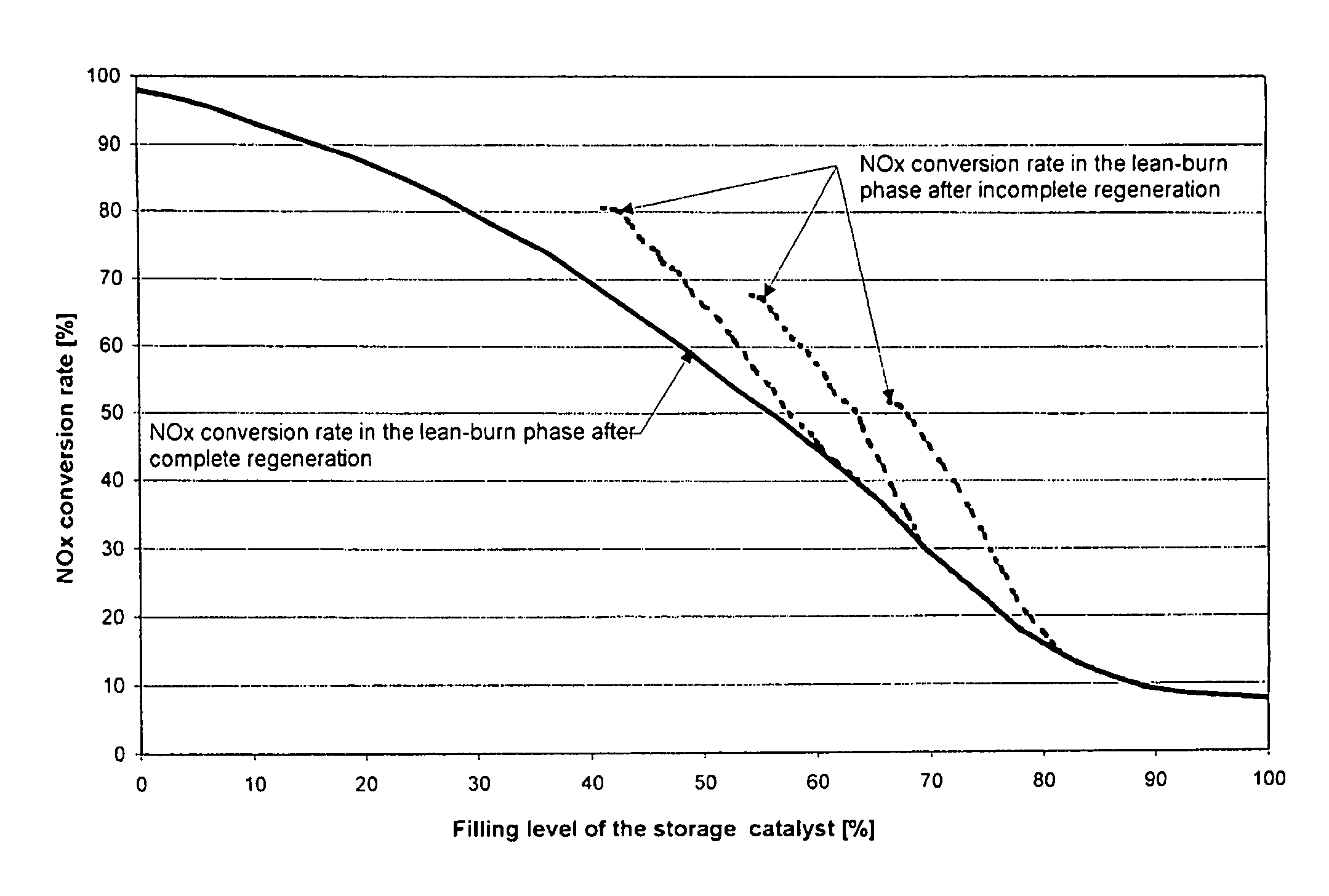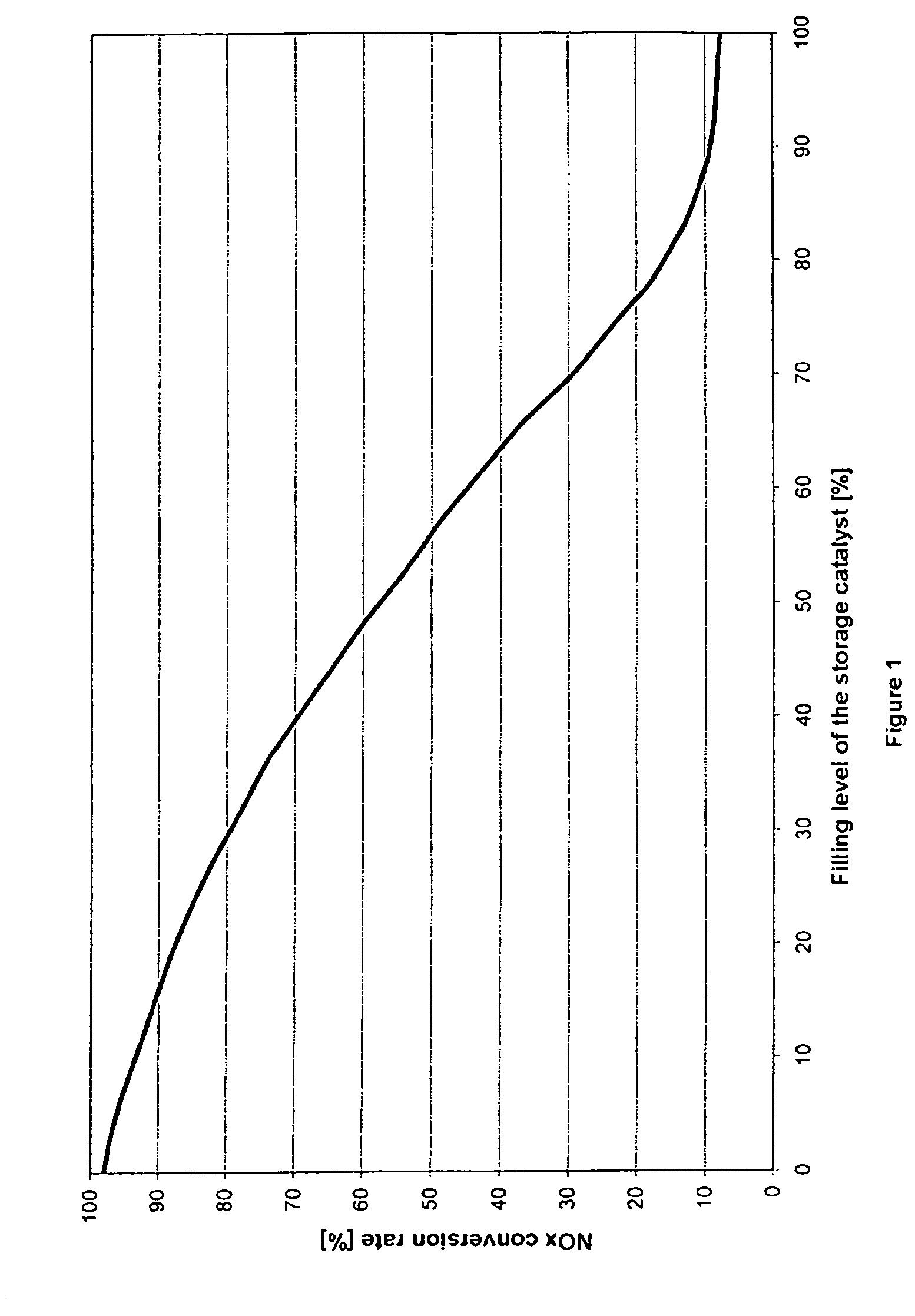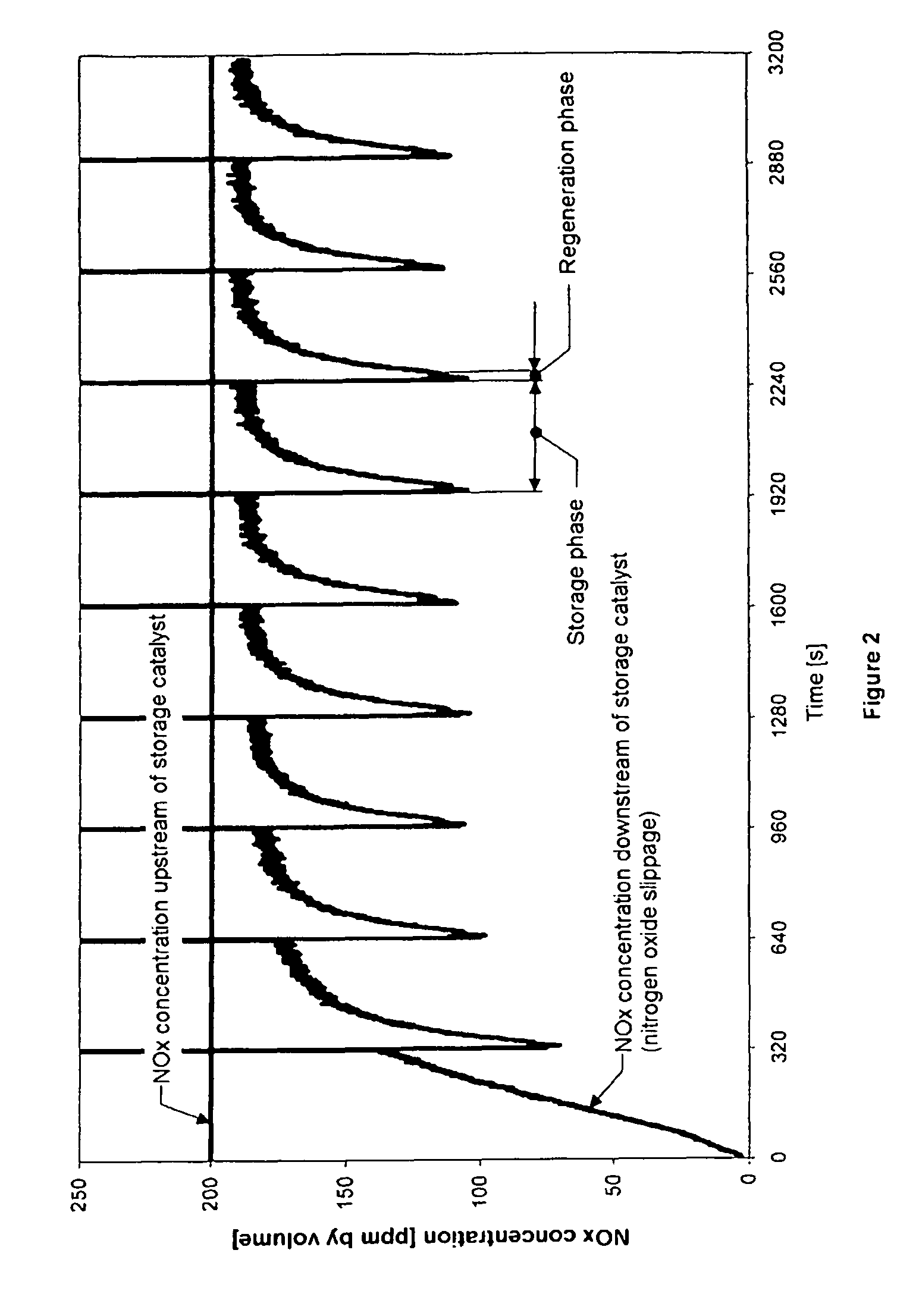Method for determining the instant at which a nitrogen oxide storage catalyst is switched from the storage phase to the regeneration phase and for diagnosing the storage properties of this catalyst
- Summary
- Abstract
- Description
- Claims
- Application Information
AI Technical Summary
Benefits of technology
Problems solved by technology
Method used
Image
Examples
example
[0042]A conventional storage catalyst was produced by coating a honeycomb carrier of cordierite (62 cells / cm2, corresponding to 400 cpsi) with a catalyst material based on barium oxide, which as catalytically active components contained platinum and rhodium on an active alumina.
[0043]A drilled core of this catalyst with a diameter of 2.54 cm and a length of 7.62 cm was used for the following tests in a model gas installation. In the model gas installation, the catalyst was subjected to various working cycles comprising storage and regeneration phases at a gas temperature of 250° C. and a space velocity of 77 000 h−1. The gas compositions during these phases can be taken from the table below. Under these exhaust-gas conditions, the catalyst had a storage capacity of approximately 2.5 grams of NO2 per liter of catalyst volume.
[0044]
TABLEGas composition during storage and regeneration phaseStorage phaseRegeneration phaseGas component(lean)(rich)Carbon monoxide200ppm by volume2%by volum...
PUM
 Login to View More
Login to View More Abstract
Description
Claims
Application Information
 Login to View More
Login to View More - R&D
- Intellectual Property
- Life Sciences
- Materials
- Tech Scout
- Unparalleled Data Quality
- Higher Quality Content
- 60% Fewer Hallucinations
Browse by: Latest US Patents, China's latest patents, Technical Efficacy Thesaurus, Application Domain, Technology Topic, Popular Technical Reports.
© 2025 PatSnap. All rights reserved.Legal|Privacy policy|Modern Slavery Act Transparency Statement|Sitemap|About US| Contact US: help@patsnap.com



